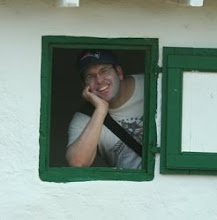Land Conservation for Birds
A couple weeks back I ran into this article in the Hartford Courant. Biologist Robert J. Craig has just compiled seven years of data of his bird sightings in Connecticut and Rhode Island. Through his research he was able to map the density of birds during each season.
That in itself isn't that unique. Citizen groups like the Massachusetts Audubon Society and the National Audubon Society have been doing this for years. The difference is that Craig uses his data to make the case for what type of land should be conserved. Since the density of birds in winter is highest in the coastal forests, Craig suggests that we devote most or all of our limited conservation funds in this region.
The article presents a contrary viewpoint in the case of the Grasshopper Sparrow. This species depends on grassland habitat. If Craig's conservation plan was adopted most of this habitat type in Southern New England's would vanish. And so would the Grasshopper Sparrow. But, since this species is common elsewhere in the US, this would be an unfortunate but acceptable loss.
While I don't think that this is unreasonable, I believe that Craig's theory has many issues. First, if just the coastal woodlands are to be protected, what would happen to the areas which migrating birds use to rest and refuel as they journey north? How about the human aspect of the issue? I certainly wouldn't want to live in an area of the state devoid of all conservation land. With no place to hike, bird, swim, etc. life would be a lot less fun. And lastly, I think that Craig's assessment is extremely myopic in that it considers only birds for land conservation. What happens to the other organisms (turtles, butterflies, mammals, snakes, etc.) that depend on different habitat types to survive. They may not be as photogenic as the birds but they must be considered in any land conservation decisions.
I welcome your comments on this interesting subject.


0 Comments:
Post a Comment
<< Home